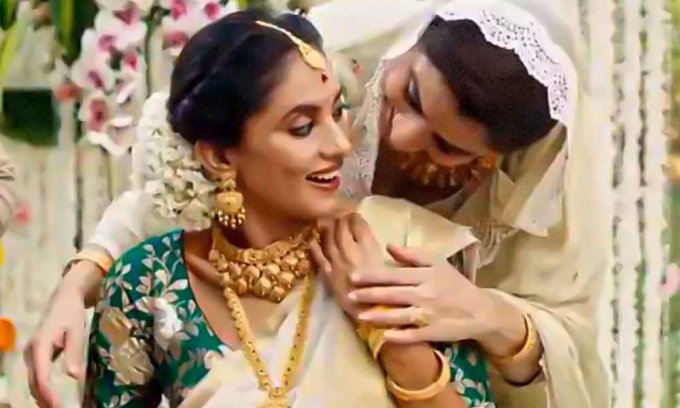In the recent heat of Tanishq advertisement, controversial advertisement is once again the hot topic in the world of marketing and advertising.
Tanishq ad features a ceremony like baby shower of Hindu daughter in law of a Muslim family. This ad did not go well with some of its viewers. Finally, Tanishq went on back foot and apologized for hurting the religious sentiments.
Internet is flooding with the examples of such ads that may hit hard on your morals, beliefs and conventional thinking.
Another recent advertisement is of Paytm where a child being slapped by his coach. (Though the advertisement says, it does not condone violence towards children).

(Screengrab from Paytm ad)
Most of our readers will surely remember an advertisement of Amul Macho (Yes! The same ad with catchy line ‘Ye to bada toing hai’). Did this memory just bring a smile on your face? This is why controversial advertising is in demand. To stay in your memory for the longer time.
Do companies know about the aftereffects before featuring such ads? Sometimes such advertisements are deliberately done and sometimes inadvertently. Many a times neither the brand nor the advertisement agency have any beforehand idea about people’s reaction.
Generally, controversies take place when ads speak about religion, politics, sex, vulgarism, manners, ethics, morals or even blood, gore and feces. Most of the times, it is not what you wish to convey through an ad but it is more about people’s mindset about watching those images on TV or any medium.
Benetton, the clothing retailer of Italian brand United Colors of Benetton is a pioneer of controversial (shock) advertising. Benetton started experimenting with shock advertisements in 1980s’, which did gain popularity with severe backlash.
The only aim of any kind of advertisement is to engage people and convey their message in a minute on two. Of course, when your advertisement touches viewers’ sentiments, their not-so-expressed feelings; they are hooked. Therefore, the attention grabbing techniques like bold, provocative offending ads and showing nudity, vulgarity, sexual references, and violence do catch eyeballs but if not executed well, they may horribly backfire on the brand.
Controversial advertisements challenge public’s ideas about morality and values. These ads offend people by showing what they want to stay hidden and private. Controversial topics are those topics that we do not talk or joke about in professional space. Such topics where parents consider children too innocent for such material. Advertisements about STDs, family planning and female hygiene are also a part of controversial advertising.
Few years back, when sanitary pads ads started airing on TV; viewers used to change channels. People asked to ban these ads since it was too uncomfortable to watch them with kids and elders in the family. Debates took place on news channels about banning private hygiene ads, women’s groups took stand for the necessity of sanitary pads and the ads became famous. Finally, an issue of female health and hygiene got the required attention.
Featuring controversial advertisement is always a risk for a brand. Touching to the public’s core beliefs will surely have aftereffects on your brand. People will link your brand to the values promoted in your ad. Few days back, Oreo biscuits came up with multiple colors to support LGBTQ community. Suddenly some people got offended while others praised for brand’s bold stand.

If you ever wish to give a shot to controversial advertisement for your brand so that you can have more reach; then it is suggested to show it first to the small focus groups and work as per their feedback.
Of course, No publicity is bad publicity but definitely not on the expense of your brand’s goodwill.

